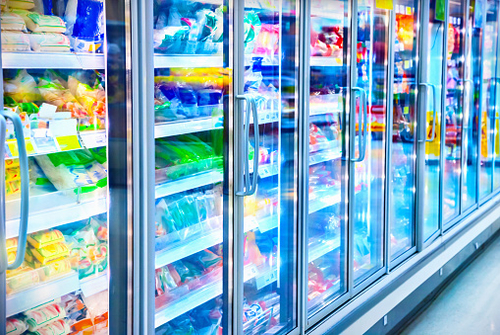Real Stories of Supply Chain Agility – Part Three

Every day, on calls with Cleo customers, I am learning first-hand how leading supply chain-driven businesses are adjusting to the COVID-19 pandemic. In this blog series I share insights about how companies in various industries are responding. Their agility is remarkable, and something we can all learn from. Hope this helps everyone think differently.
Blog #3 – Expanding Beyond Your Core Business
Last weekend I spoke with a Cleo customer, a top player in a $750 million segment of the frozen food manufacturing industry, about how COVID-19 is impacting its business. What I learned will fascinate you, because rather than being in dire straits due to supply and demand shocks impacting the food supply chain, this company instead sees itself with a unique opportunity to quickly expand beyond its traditional core business and strengthen its leadership position.
What’s more, the company sees EDI and ecosystem integration as the lynchpin technology for making that happen.
This company makes one core specialty frozen food product and sells it nationwide to customers in a wide variety of industries. As many companies across industries are currently experiencing, the pandemic has caused demand shocks in some of the key segments it serves and has steadily counted on as revenue for decades. For example, commercial customers in the airlines, sports, and entertainment industries have far less need for its product, because these segments are largely stalled. And in the food distribution segment, one large customer said it can’t buy as much of it right now because it needs to use its limited freezer space for higher priority goods at this time.
Yet while its traditional customers in core, usually predictable segments are temporarily holding back purchases, other segments, such as the grocery and retail industries, as well as home food delivery services like Instacart, Uber Eats, and Grubhub, are demanding far more of it. So, while our client has experienced a near total drop-off in demand from some of its historically dependable and predictable commercial segments, demand from other “consumer” segments has skyrocketed 300-400%, resulting in what the company called “basically a wash” revenue wise.
While maintaining revenue status quo is a great achievement given the broad downturn in the nation’s economy, the company is wisely using this time to explore other ways to accelerate growth. For example:
- How can we add more new grocery / retail customers faster?
- Are there new distribution channels we’ve never thought of before?
- What else could we be shipping with our underutilized fleet of refrigerated trucks?
My counsel when these ideas came up was that, since it have already implemented a cloud-based ecosystem integration platform, it could build upon that foundation to make any of these operational pivots feasible by creating new ecosystems of customers and suppliers. Here’s how.
- Expanding Footprint in Grocery / Retail -- EDI is a price-of-entry technology in the grocery and retail sectors. Once a new grocery or retail chain customer is identified, those new partners could be onboarded rapidly. This will expand its grocery/retail ecosystem and enable more product to be sold into a burgeoning channel where demand right now is exceptionally high
- Adding New Channels – While commercial customers in segments like airlines and entertainment are not buying because of the downturn, with so many people quarantining at home, consumer buying patterns for food are shifting. What this really means is that entirely new ecosystems are opening up for our customer. Consumers are buying through e-commerce marketplaces … via grocery store chains providing home delivery of essential household items such as milk, eggs, and ice cream … and purchasing frozen food as part of meal kits prepared by food companies or restaurants that are delivered through food couriers. Tying into these channels through an EDI platform would be an easy and natural extension of our customer’s business
- Acting as a Logistics Company – With markets shifting quickly, and buying patterns changing, our customer noticed it has excess shipping capacity on its trucks. With this in mind, it could leverage its fleet to become a specialty 3PL provider that transports frozen food items on behalf of other companies, not just ship its own core product.
The common denominator across these three expansion concepts is that they all represent new ecosystems that our customer could either create or penetrate. COVID-19 is giving the company the opportunity to drive growth and profitability by expanding its digital ecosystem and accelerating core business processes, such as order-to-cash and procure-to-pay. By having end-to-end business process integration visibility, our client could ramp up production to accommodate higher demand in the most promising segments, tie into new channels, and repurpose its fleet to do more.
As always, please reach out to me on LinkedIn with any questions or comments that you might have. And refer to Cleo’s COVID-19 FAQ guide for more suggestions to help you navigate these difficult times.

About Cleo
